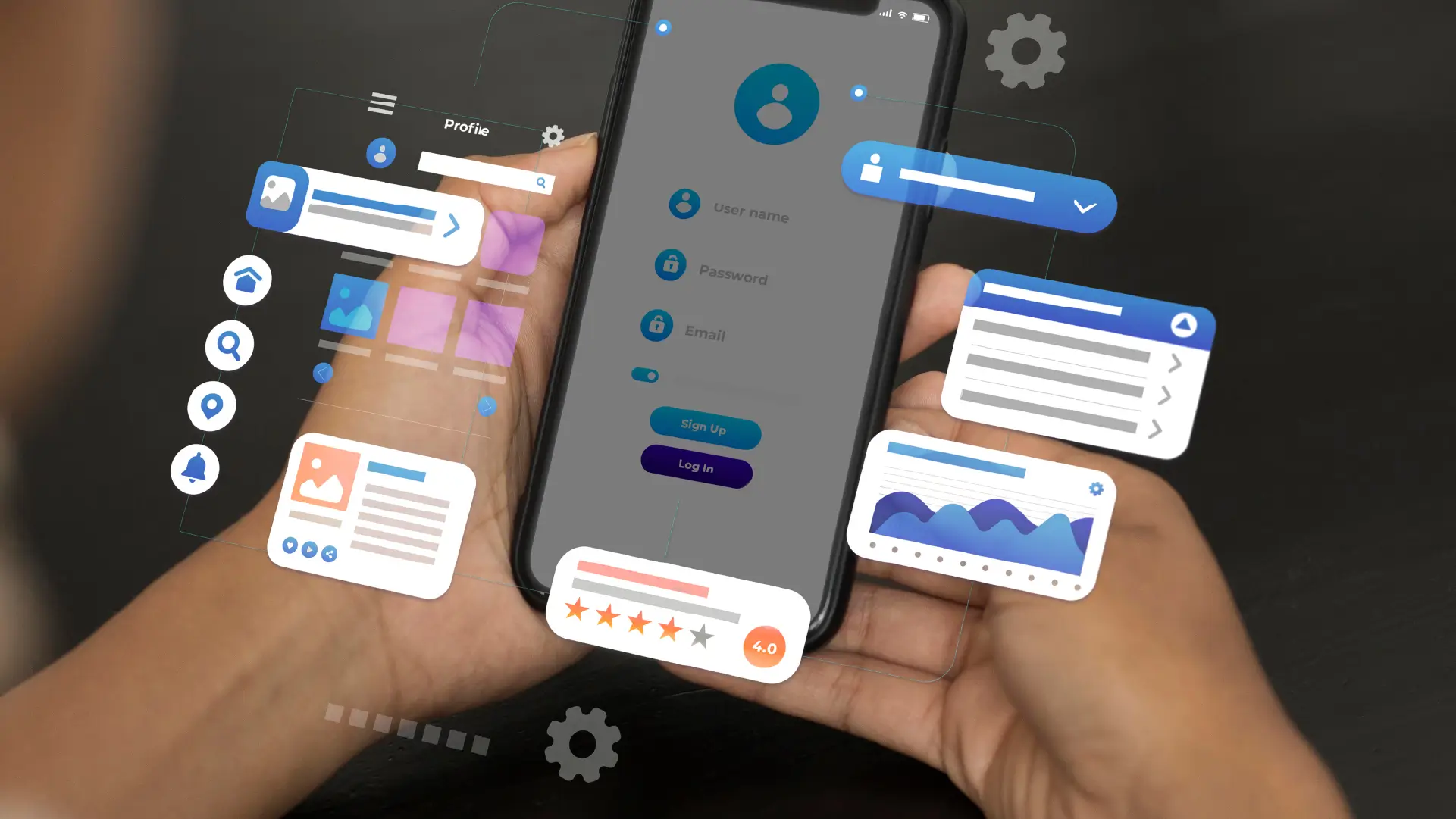In the dynamic world of enterprise software development, ensuring the reliability and performance of enterprise applications is crucial. Enterprise application testing serves as the backbone that supports this necessity, providing a structured approach to evaluating and improving the functionality, security, and user experience of applications on a large scale. This blog dives deep into the strategies and tools necessary for effective enterprise application testing, highlighting the role of open-source tools in this critical domain.
Understanding Enterprise Application Testing
Enterprise application testing is a specialized field of software testing that focuses on ensuring that large-scale applications, which are critical to the operations of a business, meet stringent requirements for functionality, security, performance, and integration. This process is crucial because enterprise applications are complex, often integrating multiple systems across different platforms and networks, and serve many users with diverse roles within the organization.
Key Challenges in Enterprise Application Testing
1. Integration Complexity
Enterprise applications rarely operate in isolation; they must integrate seamlessly with other systems, including legacy systems, third-party services, and various operational technologies. Each integration point introduces potential failure points and complexities in testing:
- Interface Compatibility: Ensuring that different systems communicate effectively without data loss or errors.
- Data Synchronization: Keeping data consistent across various platforms and updates.
- Middleware and API Challenges: Testing the performance and reliability of middleware components that link systems.
2. Data Integrity and Security
Given the critical nature of the data handled by enterprise applications, maintaining its integrity and security during testing is paramount. This involves:
- Data Volume and Variety: Enterprise applications often process vast amounts of data, complicating testing efforts, especially when data formats vary widely.
- Security Compliance: Adhering to industry-specific security standards and regulations to prevent data breaches and ensure privacy.
- Data Masking and Anonymization: Implementing techniques to protect sensitive information while maintaining the usefulness of data for testing purposes.
3. Scalability and Performance
Enterprise applications must be scalable and performant under varying loads, often supporting thousands of simultaneous users across different geographical locations. This necessitates:
- Load Testing: Simulating peak loads to understand how the system behaves under stress.
- Performance Bottlenecks: Identifying and resolving bottlenecks that could impair application performance and user experience.
- Scalability Assessments: Verifying that the application can scale up or down based on usage without degradation of performance.
4. Regulatory Compliance
Many enterprise applications operate in regulated environments, which means that compliance with laws and standards is critical:
- Regulatory Testing: Ensuring the application meets all relevant legal and regulatory requirements before deployment.
- Audit Trails: Implementing and testing systems that create logs and audit trails necessary for compliance.
- Change Management: Ensuring that changes in the application or its environment comply with regulatory standards.
5. User Experience and Accessibility
The diversity of end-users for enterprise applications often means a broad range of user experiences must be considered during testing:
- Cross-Platform Consistency: Ensuring the application delivers a consistent experience across all platforms and devices.
- Accessibility: Ensuring the application is usable for people with disabilities, adhering to standards like the Americans with Disabilities Act (ADA) and Web Content Accessibility Guidelines (WCAG).
- User Feedback Integration: Incorporating real user feedback into testing cycles to improve usability and satisfaction.
These challenges require sophisticated testing strategies and tools that can handle the complexities of enterprise applications. Effective testing must address functional and non-functional requirements and consider the broader business context and the critical nature of these applications.
Top Open-Source Tools for Enterprise App Testing
In application testing, selecting the right testing tool for enterprises is pivotal for achieving efficiency and effectiveness. Open-source tools offer the dual benefits of cost reduction and community-driven enhancements, making them particularly appealing for businesses looking to scale their testing capabilities. Here's a detailed look at some of the top open-source tools that are shaping the landscape of enterprise app testing:
Selenium
Overview: Selenium stands out as one of the most popular automation testing tools for enterprise for web applications, providing a robust framework for testing across various browser and operating system combinations.
Key Features:
- Supports multiple programming languages like C#, Java, Ruby, Python.
- Integrates seamlessly with other testing frameworks and tools.
- Allows for parallel test execution to reduce run time.
- Extensive browser support, including Chrome, Firefox, and Internet Explorer.
JMeter
Overview: Apache JMeter specializes as a testing tool for enterprise in performance testing and is highly effective for testing static and dynamic resources, simulating a heavy load to check network or application performance under stress.
Key Features:
- Ability to simulate multiple and concurrent user traffic.
- Versatile enough to test databases, LDAPs, web services, and more.
- Visualizes test results for easy analysis and sharing.
- Extends functionality via plugins.
Katalon Studio
Overview: Katalon Studio offers a comprehensive environment for web, API, mobile, and desktop application testing, which, while not completely open-source, has a robust free version highly suitable for enterprise use.
Key Features:
- Combines UI and API/Web services testing in a single framework.
- Supports scripted and scriptless workflows, making it accessible to testers of all skill levels.
- Integrates with CI/CD pipelines and popular tools like JIRA, qTest, and Slack.
- Provides a rich set of APIs for customization and integration.
TestLink
Overview: TestLink is an open-source management testing tool for enterprise that supports various aspects of the testing lifecycle, including test specification, planning, execution, and reporting.
Key Features:
- Enables requirements tracking, test plan creation, test case execution, and defect logging.
- Supports multiple users with different roles and permissions.
- Allows integration with bug-tracking tools like Bugzilla and Redmine.
- Offers extensive reporting features for test results and metrics.
Robot Framework
Overview: Robot Framework is an open-source, keyword-driven automation testing tool for enterprise for ATDD.
Key Features:
- Utilizes a keyword-driven approach to make tests easy to read and write.
- Extensible with the ability to integrate with other testing software.
- Runs on Python and Jython (Java) and can be integrated into .NET using IronPython.
- Includes a rich ecosystem of libraries and tools that enhance its capabilities.
Gatling
Overview: Gatling is a powerful open-source load testing tool for enterprise that helps analyze the performance of web applications.
Key Features:
- Specializes in handling high loads with its asynchronous, non-blocking architecture.
- Uses Scala for scripting, which offers extensive support for complex scenarios.
- Provides clear and comprehensive performance reports.
- Integrates well with major CI/CD tools like Jenkins.
Each tool offers distinct features that can cater to the diverse needs of testing enterprise applications, from web interfaces to backend services. By leveraging these open-source tools, organizations can ensure their applications perform optimally, meet user expectations, and cost-effectively maintain robust security standards.
What Sets HeadSpin's Advanced Testing Solution Apart in Streamlining Enterprise Testing
HeadSpin's advanced testing solution offers a comprehensive and versatile set of capabilities that empower enterprises to conduct thorough testing, ensuring their applications' reliability, performance, and security across diverse environments. Here are key pointers highlighting how HeadSpin facilitates efficient and effective enterprise testing:
1. Real User Experience Testing:
- HeadSpin enables testing in real-world conditions by replicating diverse network conditions, device types, and geographic locations.
- It provides insights into how applications perform across different scenarios, ensuring a realistic user experience evaluation.
2. Global Device Coverage:
- HeadSpin's global device infrastructure offers a vast library of real devices, allowing enterprises to test their applications on a wide range of smartphones, tablets, and other devices used by their global user base.
- This global device coverage ensures thorough testing and validation of application functionality across various platforms.
3. Network Condition Simulation:
- The solution allows testing under different network conditions, including 2G, 3G, 4G, and various levels of connectivity, ensuring that applications perform optimally under diverse network scenarios.
4. Performance Testing:
- HeadSpin provides detailed performance analytics, allowing enterprises to identify and address application bottlenecks.
- It supports load testing, stress testing, and other performance evaluation methodologies to ensure applications can handle varying user activity levels.
5. Security and Compliance Testing:
- Enterprises can conduct security testing to identify vulnerabilities in their applications.
- HeadSpin helps ensure that applications comply with industry standards and regulatory requirements by offering testing capabilities that focus on security and compliance.
6. Automation and Continuous Testing:
- The solution supports automation, allowing enterprises to streamline repetitive testing processes.
- Integration with CI/CD pipelines enables continuous testing, ensuring that new code changes are thoroughly tested before deployment.
7. Monitoring and Analytics:
- HeadSpin provides robust real-time monitoring tools to track and analyze key performance metrics.
- Enterprises gain actionable insights into the health and performance of their applications, facilitating proactive issue identification and resolution.
8. Cross-Browser Testing:
- HeadSpin supports cross-browser testing, allowing enterprises to ensure their web applications function correctly across different browsers and versions.
9. Collaboration and Reporting:
- The solution facilitates collaboration among development, testing, and operations teams by providing centralized reporting and analytics.
- Customizable reporting options allow enterprises to tailor insights based on their testing requirements.
10. AI-driven Testing:
- HeadSpin leverages AI for intelligent testing, identifying patterns and anomalies to enhance test coverage and efficiency.
- Smart testing recommendations based on machine learning algorithms help teams optimize their testing strategies.
FAQs
Q1. What is the best practice for security testing in enterprise applications?
Ans: Best practices include conducting thorough vulnerability scans, regular security audits, and incorporating security testing into the development lifecycle.
Q2. How often should enterprise applications be tested?
Ans: Testing frequency should be based on development cycles, the criticality of the application, and after any major changes or updates.










































-1280X720-Final-2.jpg)






